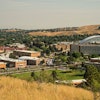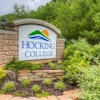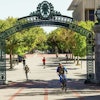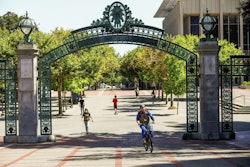Due Process: Florida A&M, Florida International Finally Get Law Schools
TALLAHASSEE, Fla. — Two months ago, more than 11,000 angry protesters marched here on Florida’s Capitol to protest Gov. Jeb Bush’s plan to end affirmative action in university admissions and state contracting.
Now the Florida governor is poised to sign legislation that would create two new law schools at the state’s two public universities where African Americans and Hispanics make up a majority of students.
The Republican-controlled state Legislature, in the waning moments of its annual legislative session, unanimously passed a measure that allows Florida A&M University here and Florida International University in Miami to open their own law schools.
Black lawmakers were effusive and equated the bill in importance with 1994 legislation that compensated Black survivors of the Rosewood racial massacre in 1923.
“This is a surreal experience for me,” says Sen. Daryl Jones, D-Miami, noting past opposition. “This is absolutely momentous.”
Florida A&M, the state’s lone public historically Black college, will open its law school in either Tampa or Orlando. It is currently the largest feeder of African American law school applicants in the state.
“Rarely in the history of the struggle for equality has a state had a greater opportunity than Florida to redress a social wrong and resurrect a people’s faith in justice and fair play,” says Florida A&M’s president, Dr. Frederick S. Humphries. “Restoring the law school to FAMU is good for the state. It is a situation where everybody wins — the Legislature, fair-minded Floridians and all African Americans who know firsthand the power of FAMU to provide opportunities for them and their children.”
Meanwhile Florida International will open its law school in the Miami area. The university provides the most minority applicants to law schools approved by the American Bar Association and is the No. 1 supplier of Hispanic law school applicants in the nation.
“We have waited many years for the opportunity to establish a law school to serve South Florida’s diverse community,” says Florida International president, Dr. Modesto A. Maidique.
Both schools have been given $2.5 million in this year’s state budget to begin preparing to offer classes by 2003. Florida A&M estimated the cost of a law school building at $27.5 million. Florida International has proposed renovating an existing building for $2.8 million.
The new schools will be the first public law schools in any of Florida’s urban areas and will offer classes to part-time students. Only full-time students can attend the state’s two public law schools at the University of Florida and Florida State University, both of which are located in North Florida.
The passage of the legislation was a bittersweet moment for many African American lawmakers who have fought unsuccessfully for several years to restore Florida A&M’s law school.
The university opened a law school in 1951 because Florida lawmakers did not want to integrate the University of Florida’s law school at the time. But the school was shut down in 1968 after state legislators cut off funding and decided instead to create a new law school at Florida State University, the predominantly White college located a mile north of Florida A&M.
“This bill will heal an open wound,” says Sen. Jim Hargrett, D-Tampa. “It also will do something vital for urban areas.”
“This is one of the greatest days in the history of this state,” says Rep. Joe Eggelletion, a South Florida Democrat who graduated from the historically Black school three years after the law school was shut down.
The drive for a new law school first began in 1991 when a commission created by the Florida Supreme Court pointed out the disparity in the state’s justice system between those who controlled the system and the majority of those sentenced to prison. The commission recommended a new Florida A&M law school as a possible way to build up the number of African Americans serving as prosecutors, public defenders and judges.
Between 1981 and 1991, 90 percent of those who graduated from Florida law schools were non-Hispanic Whites. And although Florida’s minority population is about 30 percent, only 6 percent of its lawyers are Hispanic and 2 percent are Black.
But while African American legislators pushed for a Florida A&M law school, Cuban-American legislators wanted to see a law school established at Florida International because there is no public law school located in heavily populated South Florida.
The Board of Regents, however, was concerned about the $35 million price tag for a new law school. They backed instead, the creation of a minority-based scholarship program for those who wanted to go to law school.
But questions were raised about the effectiveness of the scholarship program. A 1999 study showed that while the total number of minority students in law schools increased by 17 percent, that increase was due to a surge in Hispanic enrollment. The number of African Americans enrolled in Florida law schools actually declined during the first five years of the scholarship program.
Legislators filed bills again this year to create law schools, but initially the measures were expected to go nowhere. The Board of Regents continued to oppose the law schools and the Florida Bar Association also recommended an expansion of pre-law programs and minority scholarships to address the lack of minorities in the legal profession.
But then a group of Miami businessmen began pushing for the Florida International law school. Republican leaders also were eager to repair some of the ill will that had built up against Bush in the wake of his One Florida Initiative.
One Florida was the governor’s effort to end race-based programs in state contracting and university admissions, which has been targeted by protests and legal challenges. Bush announced the plan last November as a way to counteract California businessman Ward Connerly’s effort to put an anti-affirmative action referendum on the Florida ballot.
“It’s been a long fight and I have taken on Democratic administrations and not made any progress,” says Rep. Al Lawson, D-Tallahassee, and a Florida A&M graduate who has sponsored bills to create a law school at his alma mater in the past.
Senate President Toni Jennings, R-Orlando, pressed the law school issue in budget negotiations with House Speaker John Thrasher, R-Orange Park. Thrasher wanted money to establish a new medical school for Florida State University, his alma mater.
“The House issue was a medical school,” says Jennings. “The Senate issue became two law schools…I found something I thought was worth trading a medical school for, and that was two law schools.”
Republican Party of Florida Chairman Al Cardenas concedes that the party will use the creation of the Florida A&M law school in this year’s upcoming elections. One African American lawmaker who switched to the Republican Party in the last year is trying to win a state Senate seat against two veteran African American Democrats.
“You better believe we’re going to tell the voters that by having an African American in our party, you are able to achieve something,” Cardenas says.
Republicans will be able to take that message to voters without having to worry about battling Connerly. Connerly announced in early May that he was going to wait until 2002 before trying to place a referendum on the Florida ballot.
Bush — who was given high-fives by Lawson and other African American lawmakers after the end of the session — says he will sign the legislation creating the two new law schools. He noted that the legislation specifically prohibits admitting any student to the new law schools based on race, gender and ethnicity.
“There’s a bit of irony here in that the most vehement opponents of One Florida supported the bill…I think this concept is beginning to catch on,” says Bush.
© Copyright 2005 by DiverseEducation.com
![Screenshot 2024 06 05 141719[91541]](https://img.diverseeducation.com/files/base/diverse/all/image/2024/06/Screenshot_2024_06_05_141719_91541_.66613a2803b85.png?auto=format%2Ccompress&fit=crop&h=107&q=70&w=160)




![Screenshot 2024 06 05 141719[91541]](https://img.diverseeducation.com/files/base/diverse/all/image/2024/06/Screenshot_2024_06_05_141719_91541_.66613a2803b85.png?auto=format%2Ccompress&fit=crop&h=167&q=70&w=250)












